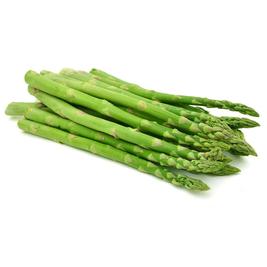|
Asparagus is considered nutrient-rich because it contains a wealth of anti-inflammatory and antioxidant nutrients. These include vitamin C, beta-carotene, vitamin E, and the minerals zinc, manganese, and selenium. Additionally, asparagus also contains valuable amounts of the omnipotent antioxidant glutathione as well as inulin, a unique type of polysaccharide that promotes digestive health. High in nutrients and low in calories, asparagus is an ideal food to consume. Some people notice that their urine has a strong asparagus-like odor after eating this vegetables. Yet, this is not a dangerous side effect. The development of urine odor following consumption of asparagus is a far more complicated issue than expected. Researchers have failed to come up with any simple explanation of this asparagus and urine odor phenomenon. Nutrients and Health Benefits  Image from whfoods.com Image from whfoods.com Health-Promoting Benefits
Researchers have identified nearly 100 phytonutrient compounds in asparagus, including, but not limited to, the following compounds: Organic acids
rhodioloside D Selecting Asparagus In order to select the freshest asparagus, look for spears that are firm with a bright green or purple color and tips that are closed. By selecting the freshest asparagus, you will also enjoy the best flavor and a better chance of high nutritional value. As with all vegetables, it is recommended to select organically grown asparagus when possible. Avoid asparagus with yellowish spears that appear to be on the verge of flowering and those with stems that are dried out and cracked at the base or are wrinkled and feel hallow; this usually indicates they are old and have begun to lose their nutritional value. Always check that the asparagus smells fresh and does not have a questionable odor. Medium-sized asparagus is the best, as very thin spears can be easily overcooked, and very thick spears are woody, tough, and stringy and often require peeling and more time to prepare. Storing AsparagusFor the best flavor and nutrition, asparagus should be enjoyed soon after they are purchased. The longer you keep it the more nutrients you are likely to lose. Help prevent asparagus from becoming limp and losing its sweet flavor. It is not recommended to store it for longer than 3-4 days maximum.Wrapping the ends of the asparagus in a damp paper or cloth towel helps offset asparagus' very high respiration rate during refrigerator storage. Many factors affect the shelf life of asparagus. A colder temperature will help minimize the rate of respiration and thereby help keep asparagus fresh for a longer period of time. Place asparagus in an airtight storage container and seal tightly, squeezing out as much of the air as possible. Do not wash asparagus before refrigeration. Preparing Asparagus Asparagus is very easy to prepare. Clean the asparagus by rinsing well under cold running water before cutting. Thin asparagus does not require peeling. Asparagus with thick stems requires extra work to prepare. The stems of thick asparagus require peeling because they are usually tough and stringy. In this case, peel the tough outer skin of the bottom portion of the stem with a vegetable peeler. Cut or snap off the bottom of each individual stalk. The ends tend to break naturally where the woody portion of the spear ends and the tender part begins. This is usually where the color changes from off-white to green. Remove the bottom part of all of the asparagus stems at one time by cutting with a knife while the asparagus is still in a bunch. The tough woody ends can be used to make broth for soup. Thick asparagus stems should be sliced in half lengthwise. This provides greater surface area, which will help it cook more quickly. Spears should be uniform in size so that they will cook evenly. Cutting off the woody ends and placing the spears in a glass of ice water for a few minutes before cooking can help make limp asparagus more crisp. Cooking Asparagus Asparagus is a delicate vegetable, which should be cooked just long enough to soften its fibers for better digestion and overall greater enjoyment. Researchers have well established that improper cooking, too much heat and long cooking times, can easily damage many nutrients present in asparagus. The most nutritious way to cook asparagus is to sauté them for 3 minutes. Use exact cooking times, and avoid using high heat. Vegetables, such as asparagus, can continue to cook if they are left in the pan after the heat is turned off. Therefore it is suggested to immediately remove asparagus from the pan to prevent overcooking. ReferencesMateljan, G. (2018). Asparagus. [online] Whfoods.com. Available at: www.whfoods.com/genpage.php?tname=foodspice&dbid=12 [Accessed 8 March. 2018].
Mercola, J. (2018). What is Asparagus Good For? - Mercola.com. [online] Mercola.com. Available at: https://foodfacts.mercola.com/asparagus.html [Accessed 8 March 2018].
0 Comments
|
This portal contains research, news, information, observations, and ideas at the level of self in an effort to address lifestyle applications.
Archives
June 2024
Categories
All
|


 RSS Feed
RSS Feed

